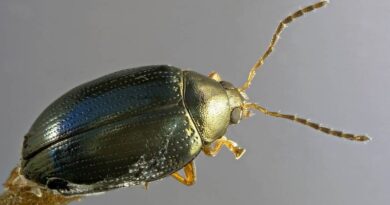How to overcome the challenges facing agriculture today?
26 June 2023, US: Agriculture is facing great challenges that undermine optimal crop development and food safety.
Increasingly extreme climate conditions, land degradation or continued global population growth are just some of the factors that lead to a reduction in available natural resources and drops in yields.
This has led to the awareness of a reality: we need to be more efficient. This is why crops must be able to optimize water and nutrients better and tolerate abiotic stresses such as droughts, extreme temperatures or saline conditions better.
But how do you get crops that can overcome all these challenges, and are productive and profitable to boot? The answer can be found in innovation. Keep on reading!
DROUGHTS JEOPARDIZE AGRICULTURAL PRODUCTION
Periods of drought—which are increasingly common and severe—pose a risk to agricultural systems. Access to water is now more difficult than ever and entails more expense, while the lack of rainfall affects yield itself due to water stress, which translates into yield losses of up to 15% on average.
Agriculture accounts for 72% of freshwater consumption for food production (FAO) and, therefore, it should also be the one to provide innovative solutions that strike the right balance between a good harvest, less resources and greater profitability for farmers.
With water supplies growing increasingly scarce, it’s crucial to make the most of every drop of water. This means producing more per unit of water used.
THE TEMPERATURE RISES AND AGRICULTURAL PRODUCTIVITY DROPS
Together with the lack of rainfall, the increase in greenhouse gas emissions has led to global warming, which has a negative impact on the physiological activity of crops. The damage is measurable: according to the FAO, yields drop by between 4% and 10% for every degree that the annual temperature rises.
The rise in temperatures causes crops to suffer heat stress. For example, a metabolic shutdown is triggered in peaches from 40°C onwards, at which point nutrient, transport stops and fruits do not achieve the desired size grade, with the subsequent reduction in the harvest.
DEHYDRATION OF CROPS IN SALINE SOILS
Another serious problem that has a negative impact on soil fertility is the rise in salinity due to poor management, excess fertilizer use or deforestation. Salinity affects 8.7% of the world’s soils, but what’s definitely more worrying is that between 20% and 50% of agricultural land is too saline.
Salinity is the main cause of dehydration of the root system. And without a strong root system, crops such as citrus fruits are unable to get water and nutrients properly.
When the plant suffers from dehydration, it keeps the gas exchange during photosynthesis from happening, right when water vapor is about to be released. To avoid further water loss, the plant will reduce its photosynthetic activity—a mechanism that could lead to its death.
RISING PRODUCTION COSTS
All these situations create uncertainty among farmers, who also see how the costs of inputs and raw materials are soaring due to geopolitical factors, as well as non-renewable resources at risk of shortage, such as phosphorus, zinc, boron, among others.
At the same time, society is calling for a more sustainable model, wants more information on what’s being consumed, and wants to know the origin of foods and how they’ve been produced. Regulators are dealing with these requests by means of new restrictions, such as the European Union’s Green Deal, which will lead to a 50% reduction in plant protection products, a 20% reduction in fertilizers and for 25% of the area to be organic.
OVERCOMING THE CHALLENGES FACING AGRICULTURE: AMAZINGLY EFFICIENT CROPS
It’s clear that the current context is complex, and farmers have to strike just the right balance between profitability and sustainability: efficiency. And this is why it’s necessary to care for and make the most of every centimeter of soil, every drop of water and every gram of nutrient.
So, how can you achieve amazingly efficient crops? At Symborg, we firmly believe that the answer lies in nature: microorganisms. But not just any microorganism will do. We need strains that have been selected for their exclusive characteristics to increase the efficiency of agricultural systems.
This is what the mycorrhizal fungus Glomus iranicum var. tenuihypharum does. It develops a symbiotic relationship with crops. In this plant-fungus symbiosis, a mutually beneficial relationship is established, in which the fungus provides the plant with water and nutrients in exchange for sugars produced during photosynthesis. This process stimulates the growth of the plant’s root system and increases its photosynthetic activity. What’s more, mycorrhizal symbiosis enables crops to increase CO2 capture and boost water-use efficiency (WUE) and nutrient-use efficiency (NUE).
Symborg has developed a range of biostimulant solutions based on this fungus to help farmers overcome the challenges facing agriculture today and to grow more productive, profitable and sustainable crops.
Also Read: Best Agrolife Ltd. Receives CIB Registrations for Three More Major Technicals
(For Latest Agriculture News & Updates, follow Krishak Jagat on Google News)















